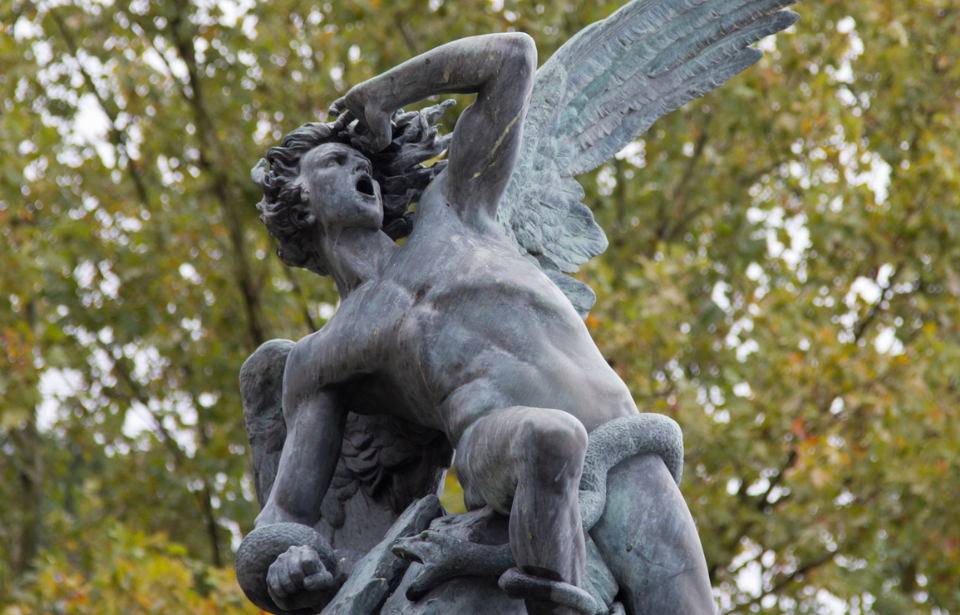The Fuente del Ángel Caído, which translates to the “Fountain of the Fallen Angel” in English, is a striking sculpture of Lucifer designed by Ricardo Bellver in 1877. Initially crafted in plaster for a national exhibition, the work was later immortalized in bronze due to its widespread acclaim. When it was placed in Madrid’s Retiro Park in 1885, it became a cultural landmark, representing one of the few public depictions of such a controversial biblical figure.
The choice of Lucifer as a subject was bold and controversial, sparking discussions and debates about the appropriateness and the artistic intent behind such a depiction in a public space. This decision by Bellver and the subsequent acceptance of the piece into the public domain reflects a fascinating period in Spanish cultural history, where art was a medium for challenging existing norms and provoking thought.
The design behind the Fuente del Ángel Caído
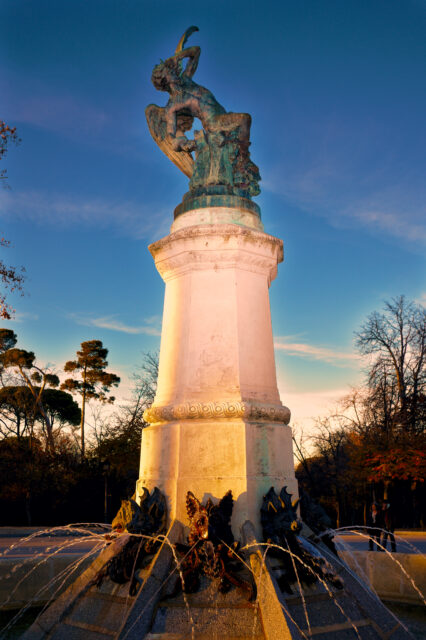
The architectural design of the Fuente del Ángel Caído plays an important role in the grandeur of the fountain. Lucifer is dramatically portrayed at the moment of his downfall, embodying a mix of defiance and despair. The high pedestal on which he stands and the surrounding figures of demonic creatures and ominous reptiles contribute to the fountain’s intense and dark allure. These elements are not merely artistic embellishments but serve a greater purpose, telling the tale of the fall from grace.
Moreover, the fountain’s design utilizes water not just as a decorative feature but as a symbolic medium that enhances the narrative of downfall and redemption. The cascading water around Lucifer mirrors his fall from the heavens, adding a dynamic and fluid element to the static sculpture. In a way, this thoughtful integration of water and sculpture invites onlookers to consider the deeper, fluid nature of moral falls and redemptions.
The changing public reception of the fountain
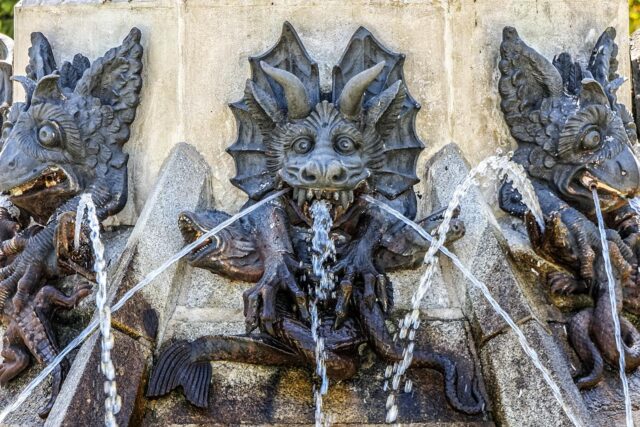
The Fuente del Ángel Caído was initially met with mixed reactions, with its bold theme of Lucifer’s fall eliciting both admiration and criticism. Over time, however, the fountain has been reevaluated and is now recognized as a significant artistic and cultural work. The shift in perception can be attributed to a deeper appreciation of Bellver’s craftsmanship and the emotional depth conveyed through the sculpture.
Today, the Fuente del Ángel Caído is regarded as a cherished landmark in Madrid, drawing visitors who are intrigued by its history and artistic merit. It serves as a testament to the evolving nature of art appreciation and the ways in which time can alter the public and critical perception of art.
It appears in many literary and cultural references
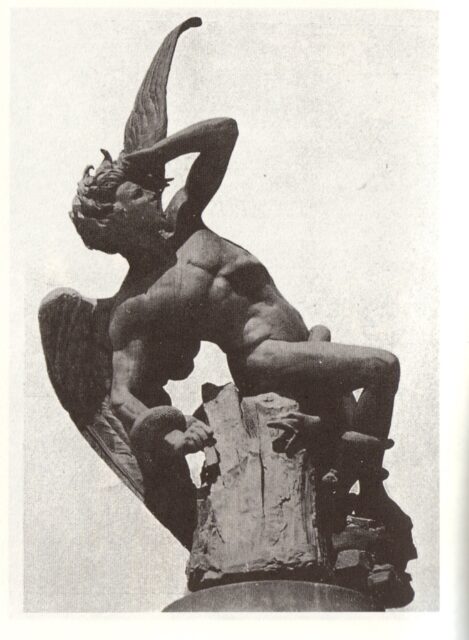
The Fuente del Ángel Caído has transcended its physical form to become a muse for various cultural expressions. It has been a source of inspiration across different artistic disciplines, influencing writers, poets, and visual artists. Each interpretation of Lucifer at the fountain reflects the personal views of the artist and the cultural context of their times, allowing the sculpture to remain a relevant and provocative piece of art.
This continuous infusion of new interpretations ensures that the Fuente del Ángel Caído remains a vibrant topic in artistic and scholarly discussions. It is not just a static monument but a living piece of art that evolves with each new cultural or personal reimagining, maintaining its relevance in contemporary discourse.
Visiting the Fuente del Ángel Caído
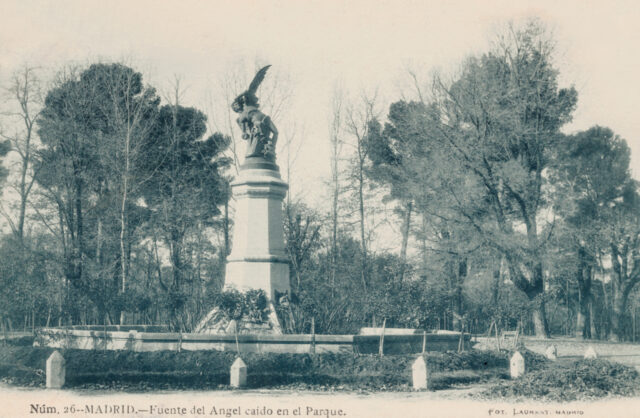
For those planning to visit the Fuente del Ángel Caído, understanding its historical and artistic background can greatly enrich the experience. Situated in the heart of El Retiro Park, the fountain is not only accessible but also serves as a captivating journey through art and history. To fully appreciate the intricate details of the sculpture, visitors are encouraged to visit during the early morning or late afternoon when the park is less crowded, and the lighting accentuates the dramatic features of the artwork.
Navigating through El Retiro Park to find the fountain can be an adventure in itself. Although easily reachable, the experience of discovering the Fuente del Ángel Caído among the lush greenery of the park adds an element of surprise and discovery to the visit, making it a memorable part of touring Madrid’s famous park.
Why the fountain continues to captivate
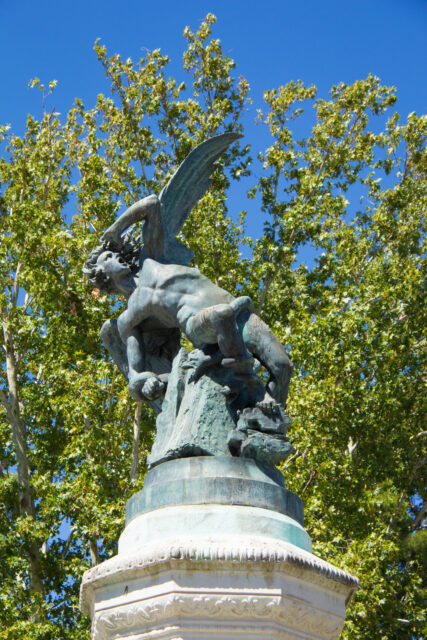
The Fuente del Ángel Caído continues to hold a special place in Madrid’s cultural landscape. Its ability to evoke a spectrum of emotions, from awe to introspection, cements its status not only within Spanish heritage but also in the hearts of those who experience it. As time progresses, the fountain remains a crucial reference point for discussions surrounding art, mythology, and the perennial struggle between good and evil.
More from us: Statue of Zeus at Olympia – Marvel of the Ancient World and Its Legacy
In essence, the Fuente del Ángel Caído is more than a mere fountain; it is a narrative sculpted in bronze and water, a chronicler of timeless tales, and a guardian of public consciousness.
